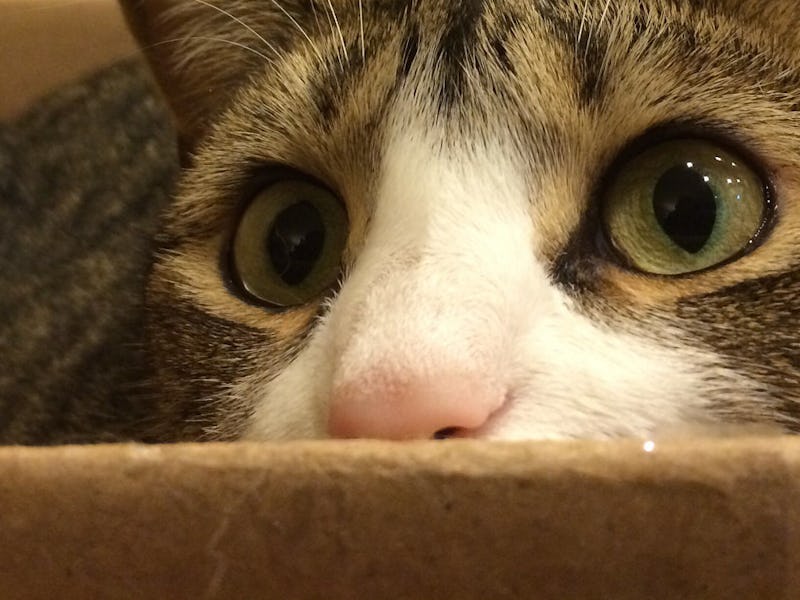General Relativity Just Rescued Schrödinger's Cat
It's got to be either dead or alive. And now we know why.

Superposition, one of the weirder implications of quantum theory, says that at the quantum level — think atoms and molecules — objects can exist in two states at once. Scientists have shown this to work when dealing with these tiny particles, but they haven’t come up with a good way to explain why it doesn’t apply in real life. Now, scientists at the University of Queensland, the University of Vienna, and Harvard University think they’ve it figured out.
Quantum superposition is famously illustrated by the Schrödinger’s cat thought experiment, originally devised to illustrate the absurdity of the theory it has come to represent. Basically, there’s a cat in a sealed box whose life is dependent on the possible decay of a single atom. If that atom decays and emits radioactivity, the cat will die. If it doesn’t, then the cat lives. But of course we can’t know this until we open the box. The experiment forces us to consider one essential question: Why are phenomena observable in quantum particles not observable in cats?
This dilemma speaks to a larger issue — perhaps one of the greatest — in physics: Quantum theory is a set of laws governing the super-small, and we have general relativity to explain everything else, but we don’t have a unifying theory that applies to everything, no matter what size.
To explain our inability to observe quantum superposition in real life, scientists looked to Einstein’s theory of general relativity. Because they deal with vastly differing scales, quantum theory and general relativity rarely cross over, so this is a big deal in the physics world.
Specifically, the scientists applied Einstein’s idea of gravitational time dilation, which suggests that the flow of time slows down near macroscopic objects, like a cat, whereas it probably doesn’t for objects at the quantum level. Gravitational time dilation also has an effect on the vibration of atoms and the other tiny building blocks that make up composite objects: as these particles combine to form macro-scale objects, their vibrations slow down, and this disrupts quantum behavior in a phenomenon known as decoherence. In essence, the presence of gravitational time dilation is the reason we don’t observe quantum phenomena in real life.
In studying quantum mechanics, the “environment” around the particles — that is, the spacetime in which they exist — is usually ignored because the force of gravity is so weak compared to the quantum forces. By bringing general relativity theory into the mix, these scientists have taken a big step outside the box.